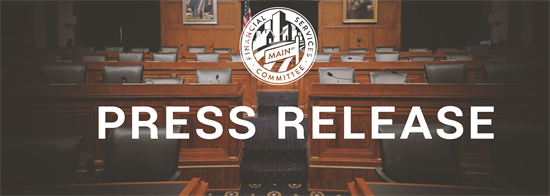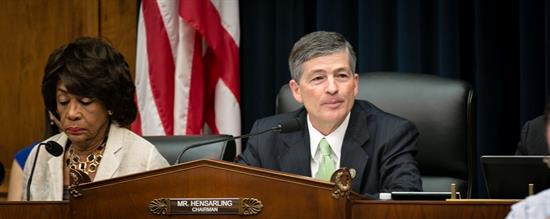Hensarling Welcomes Powell for First Monetary Policy Hearing
Washington,
February 27, 2018
House Financial Services Committee Chairman Jeb Hensarling (R-TX) delivered the following opening statement at today’s hearing with Federal Reserve Chairman Jerome Powell on monetary policy and the state of the economy: Notwithstanding the greatest monetary and fiscal stimulus in our nation’s history, the economy has limped along for eight years averaging only 1.6% GDP growth, wages remained stagnant and personal savings failed to recover from the 2008 financial crisis. A new phrase was coined by left-leaning academics in an attempt to rationalize the phenomenon, namely “secular stagnation.” A far more accurate and descriptive phrase though is “high taxes and heavy handed regulatory policy.” Fortunately, with the election of Donald Trump and the passage of the Tax Cuts and Jobs Act, that has all changed. Unemployment is now at a 17 year low, wage growth is the fastest in almost a decade, and companies all over America are now announcing bonuses to their employees and expansions in their communities. Economic growth is once again averaging 3%. However, there are some concerns. We all recognize there has been great volatility in our equity markets recently—although I note the S&P 500 is still up more than 14% since last year. There is clearly concern now whether the Fed can successfully unwind a historically “unbalanced” balance sheet after a decade of radically unconventional monetary policy and artificially low interest rates. This was not particularly an issue when the economy was stuck in low gear. But now that the economic transmission has been shifted into high gear, it clearly is an issue. So with that backdrop, we welcome you, Chairman Powell, to your first of many Humphrey Hawkins hearings. Please know we are all rooting for you, for much is at stake. As we begin a new era in Federal Reserve leadership, I think it is a good time to reestablish Congressional expectations. Now more than ever, the Fed must commit to a credible, orderly, and well communicated normalization plan. The Fed must do an even better job of communicating clearly to market participants all the variables used to conduct monetary policy and their relative weightings and interactions. And certainly it is a positive sign that the Fed has begun to compare their policies with known policy rules so that the public can better evaluate their performance. Next, monetary policy must remain independent, but the Fed must also remain accountable to Congress which, incidentally, created it and has the responsibility of coining money and regulating its value under our constitution. Furthermore, it is critical that the Fed stays in their lane. Interest on reserves – especially excess reserves – is not only fueling a much more improvisational monetary policy, but it has fueled a distortionary balance sheet that has clearly allowed the Fed into credit allocation policy where it does not have business. Credit policies are the purview of Congress, not the Fed. When Congress granted the Fed the power to pay interest on reserves, it was never contemplated or articulated that IOER might be used to supplant FOMC. If the Fed continues to do so, I fear its independence could be eroded. Finally, in addition to its monetary policy responsibilities, we all know the Fed has an outsized prudential regulator role, vastly expanded post Dodd Frank. This responsibility is clearly not designed to be independent of Congress and must be made subject to appropriations, as are other prudential regulators. Additionally, formal rule-making must not be eschewed for de facto rule-making through guidance, and all formal rule-making must be subject to rigorous statutory cost-benefit analysis so as to not unduly hamper economic growth and the hopes and dreams of millions. In closing, regardless of the exigencies of 2008, monetary policy is not and can never be a substitute for sound fiscal policy. Chairman Powell, we look forward to a prudent path to normalization where interest rates are once again market based and credit is allocated to its most efficient use. ### |




